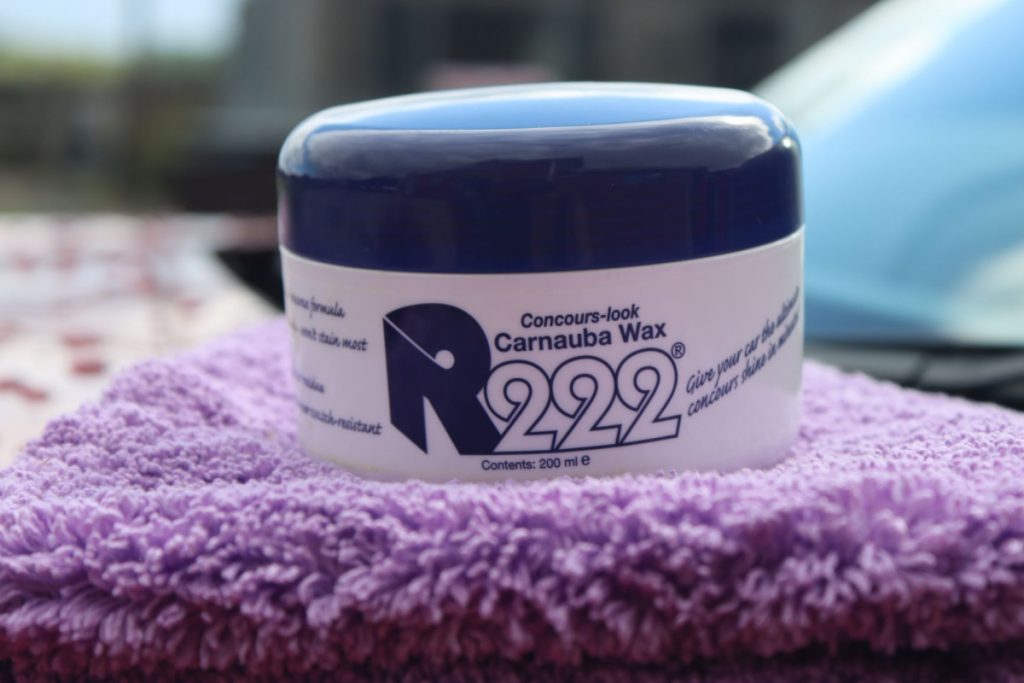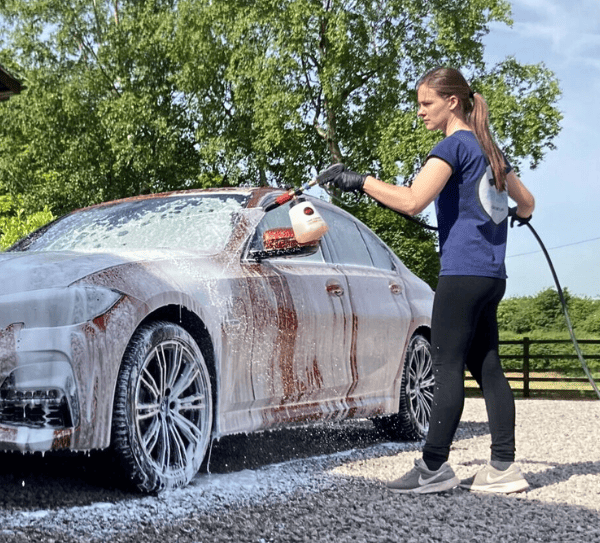One of the biggest questions beginner detailers ask, is if they should be a wax over or on top of a sealant? What’s the best layering order, and is it necessary to apply both?
In this article, I’ll be answering all these questions so you can properly protect your vehicle’s paintwork and get that glossy wet-look to the finish.
The Quick Answer
Sealants should be applied to the paint first, and should not go on top of a wax. This is because sealants need to properly bond to the paint in order to maximise durability. Waxes can be applied over the top of sealants or on their own.
Unsure about the difference between these types of products? Check out my in-depth comparison between waxes and sealants to learn everything you need to know.
Sealants Go Under Waxes
Sealants need to properly bond to the paint surface. Most sealants last around 4-12 months, depending on the product. However, in order to achieve the maximum durability claims, the paint surface must be adequately prepared.
This means the paint should be:
- Fully decontaminated using a clay bar, iron remover and tar remover
- Free from any waxes, sealants or coatings
- Free from any polishing oils or glazes
Essentially, sealants need to be in contact with the paint, and anything else on the surface will interfere with this bonding process.
Of course, it’s not always necessary to fully decontaminate the paintwork every time you apply a sealant. But keep in mind that it probably won’t last as long as it says on the packaging.
I have tested this out in the past using a sealant that claimed 12 months durability, over a wax. The sealant definitely disappeared after around 3 months, leaving the car unprotected.
If you do decide to layer a sealant over a wax, then keep in mind that it’ll only last as long as whatever is underneath (in general).
For example, if you put a sealant that claims 12-months protection, on top of a wax that claims 2-months protection. Then the maximum the sealant will stay on the paint for, is 2-months, because the wax underneath is likely to slip off the paintwork first.
Of course, the exact amount of time the paint protection will last really depends on the products you’re using, and whether they’re compatible. Products from the same brand tend to layer better than if you’re choosing different brands.
Why Should You Not Apply a Wax First?
There are a couple of reasons why a wax is better on top of a sealant than underneath:
- Waxes, unlike sealants, don’t need to bond to the paint to get the best durability out of the product.
- Sealants tend to last longer than waxes. The overall protection on the car will only last as long as the bottom layer. So applying the most durable product as the bottom layer makes the most sense.
How to Layer Waxes and Sealants
So if you’re using a wax and a sealant together, you’ll need to keep in mind some rules so you get the best results.
- Fully clean the paintwork (decontaminate if necessary) and dry it. Take a look at this guide to safely washing your car without causing scratches.
- Apply your sealant.
- Allow it to cure for at least 12 hours (preferably 24) inside to prevent dust, dirt and water settling on the paint.
- Apply the wax. Wash the car again first if there is any dust on the car, or if you were unable to store it inside.
Allowing the sealant to properly cure before layering a wax on top is essential to maximise the durability. Otherwise, the wax will potentially smear the sealant underneath.

Check out my recommended waxes and sealants page.
Is it Necessary to Put a Wax on Top?
So is it always necessary to put a wax on top of a sealant? Can you just use one product? Of course!
I remember when I was first getting into detailing, there was so much advice about this topic that looking back on with a bit more experience, I don’t really agree with.
A lot of car owners are under the impression that you need a sealant to protect the paint for longer, and a wax to give you that glossy wet-look. But this really isn’t the case.
Generally, sealants do last longer than waxes, and waxes offer a warmer, glossier finish, but not always.
It’s perfectly fine to apply only a wax to the car, as long as you keep it topped up. A good quality wax will do just as good a job of protecting the paint as a sealant, it generally just needs to be applied more regularly.
It’s also fine to apply a sealant on its own, without topping it with a wax. Sealants still leave a great finish, they tend to look a bit cooler than waxes but many car owners prefer this look anyway.
Bottom line, you do you. If you just want to apply one or the other, then go for it! Your car will be protected and look great either way!
Disadvantages of Layering
So now we’ve addressed that it’s not necessary to always apply a wax and a sealant. Now let’s address any disadvantages of applying both products.
You’ll Only Get the Properties of the Top Layer
So say you’ve got a super water repellent sealant on the car, and you want to top it with a very glossy wax that isn’t as water repellent, then you will lose the properties of the sealant. This means that the water won’t bead and sheet as well anymore, as it is only reacting to the wax on the top layer.
So make sure you choose a top layer that you actually like the properties of, rather than just focusing on gloss!
The Durability Will Be Reduced
Even though waxes go over the top of sealants fine, the durability will usually be less than it claims on the packaging. Say a wax claims 3 months protection, this generally applies to when used as a bottom layer on bare paint. You’ll probably get closer to 1.5-2 months protection, depending on the product.
The Masking Effect
Take this example, you apply a sealant as the bottom layer that has great water repellency and protection and it claims 12 months durability. Then you apply a wax on top that gives 2 months durability.
You’d probably think that after 2 months, you’d get the great water repellency of the sealant back? Unfortunately, this rarely happens. This is because the wax essentially masks the sealant and even when it’s pretty much gone, it will have altered the characteristics of the bottom layer of protection.
This is personally why I don’t layer waxes and sealants because you essentially have to keep applying the top layer anyway.
Frequently Asked Questions
Don’t worry if you’ve still got some more questions. Here are the answers to some of the most commonly asked questions about layering waxes and sealants.
How long should you wait after applying a sealant before applying the wax?
It is best to wait at least 12-24 hours after applying a sealant before applying a wax over the top. This allows the sealant to properly cure, which maximises the durability and prevents streaking and smearing.
Do I need to polish before applying a sealant?
It is not always necessary to polish before applying a sealant unless the paint needs correcting or enhancing. However, decontaminating the paintwork with clay and then polishing, can help the sealant to bond to the paint and maximise the durability.
Can I apply a sealant over a glaze?
Applying a sealant over a glaze will reduce the durability of the sealant. Sealants need to properly bond to the paint surface and glazes interfere with the bonding process. Waxes are much better instead at being layered over glazes.
Can you layer two sealants?
It is possible to layer sealants over the top of each other, however the durability of the top layer of sealant will be reduced as it is unable to properly bond to the paintwork.
Can you layer two waxes?
It is possible to layer waxes over the top of each other, however you will only see the surface characteristics (finish, water repellency etc.) of the wax on top. Applying two layers of wax will not provide double the amount of protection.
Take a look at this article on how many layers of wax is optimal to learn more about this topic.
Thanks for reading! I hope you’ve found this article useful. Don’t forget to take a look around the rest of the website to learn everything you need to about car detailing!

